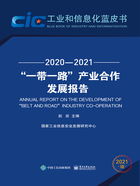
Abstract
The year 2020 marks the seventh year of “The Belt and Road” Initiative. Most countries around the world have been struggling to strike a balance between controlling the COVID-19 pandemic and reviving the economy. In this situation, China, as the only major economy in the world to achieve positive economic growth in 2020, not only realized a growth rate of 2.3%, but also resumed economic and trade exchanges with countries along “The Belt and Road” in a stable and orderly manner under the guarantee of “The Belt and Road” mechanism. With deep cooperation in infrastructure, energy, intelligent manufacturing and other fields, China has strived to improve connectivity with relevant countries, and always adhered to the original aspiration of “The Belt and Road” Initiative.
In 2020, we are confronted with daunting tasks. Under the COVID-19 pandemic, China has actively participated in global public health governance, and helped countries along “The Belt and Road” to prevent and control the epidemic on the basis of effectively controlling the COVID-19 in China, laying a solid material foundation for their economic recovery in the post-epidemic era. In general, remarkable achievements have been made for the development of “The Belt and Road” in 2020 in terms of responding to the COVID-19 outbreak, building consensus on cooperation, stepping up the construction of six corridors and six roads, promoting the harmonization of rules, standards and laws, enhancing trade liberalization and facilitation, strengthening industrial investment cooperation, improving financial services capacity, and tightening people-to-people bond. Based on the concept of “extensive consultation and joint contribution”, the countries along “The Belt and Road” have actively implemented “The Belt and Road” Initiative, exchanged needed goods among industries, and paid attention to the quality of development for a win-win situation, which has created extremely favorable conditions for the rapid economic development of all countries. By November 2020, China had signed 201 documents on “The Belt and Road” cooperation with 138 countries and 31 international organizations. The entire Eurasian and African continents had been closely linked by the Bangladesh-China-India-Myanmar Economic Corridor (BCIMEC), the China-Pakistan Economic Corridor (CPEC), the China-Indochina Peninsula Economic Corridor, the New Eurasian Land Bridge Economic Corridor, the China-Mongolia-Russia Economic Corridor, and the China-Central Asia-West Asia Economic Corridor (CCWAEC), which developed a new Silk Road Economic Belt, achieved good economic radiation drive and accumulation effect, created a social and economic driving force for cities at all levels and stages of development along the route, formed an international economic area featuring circulation integration and industrial agglomeration, and greatly promoted mutual trust, cooperation and common prosperity of countries along the route with the continuous progress and extension of “The Belt and Road” Initiative.
“The Belt and Road” Industrial Cooperation Development Report (2020-2021) summarizes the achievements and performance of the cooperation between China and countries along “The Belt and Road” in digital economy, education, infrastructure, medical care, communications and economy in 2020 based on the research findings and key points of view from global research institutions and authoritative media. The book is divided into six parts: General Report, Sub-report, Special Report, Policies, Events and Trends. The General Report outlines the development trend and prospects of industrial cooperation between China and countries related to “The Belt and Road” Initiative. The Sub-report consists of six sections. Starting with the joint construction of “The Belt and Road” Economic Corridor, it focuses on the analysis of the latest trends and development characteristics of the political mutual trust between China and countries along the six major economic corridors (i.e. China-Pakistan, Bangladesh-China-India-Myanmar, China-Indochina Peninsula, New Eurasian Land Bridge, China-Central Asia-West Asia, and China-Mongolia-Russia) as well as the sustained and steady progress of friendly industrial cooperation. Centering on digital economy, industrial Internet, industrial information security and other current hot topics, the Special Report studies and discusses the status quo of industrial development between China and ASEAN, problems to be solved and the great room for cooperation. Based on the Global Think Tank and mainstream authoritative media, the sections of Policies, Events and Trends summarize the latest progress of the year and take an in-depth look at some selected “The Belt and Road” industrial cooperation policies, major events and cutting-edge development trends in 2020.
Informative from unique perspectives, this report is highly forward-looking and predictive for industrial development. It can help relevant authorities, industry associations and research institutions have a comprehensive understanding of the development situation and scientific decision-making of Sino-foreign industrial cooperation under “The Belt and Road” Initiative, and provide reference for enterprises and financial institutions to make overseas investment and project financing. Due to the limited time and level, there are inevitably mistakes and flaws in the report. We sincerely thank the readers for their criticism and correction.
Keywords: “The Belt and Road” Initiative; Industrial Cooperation